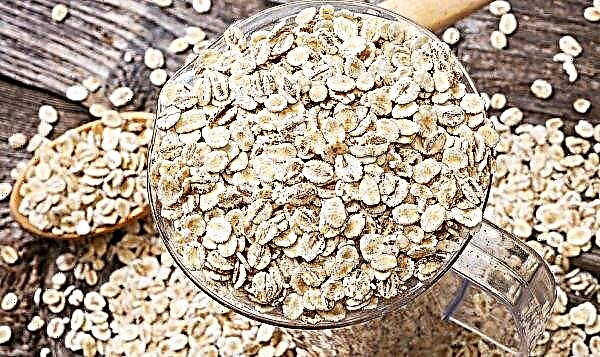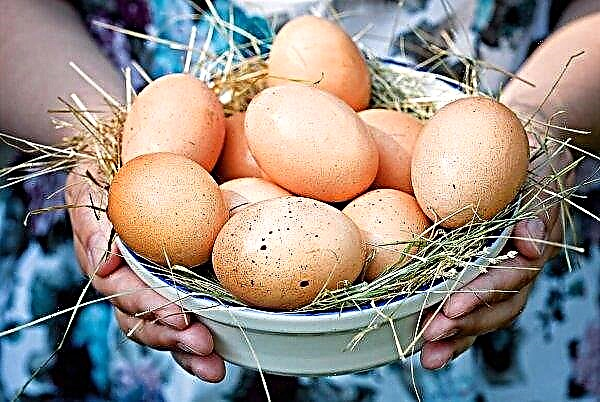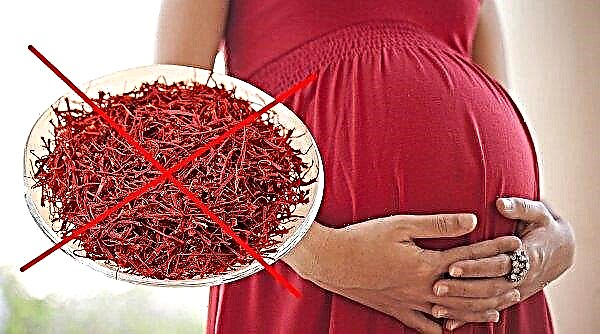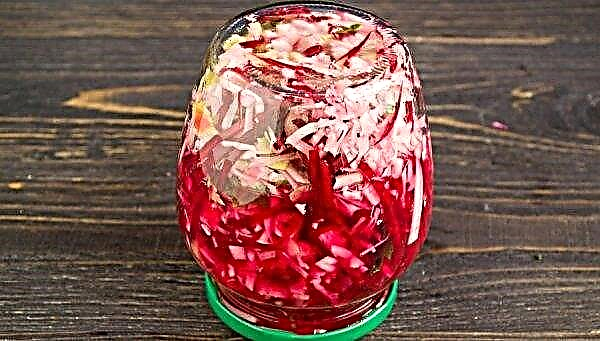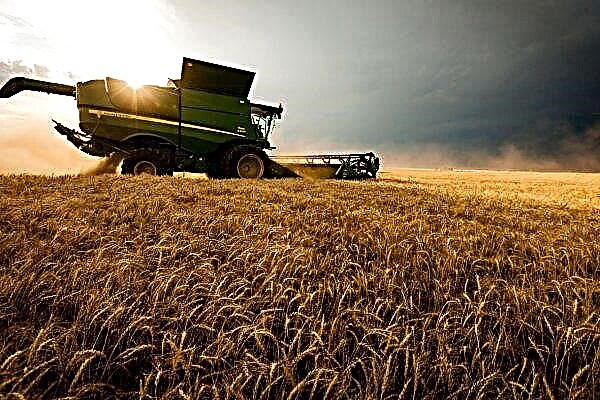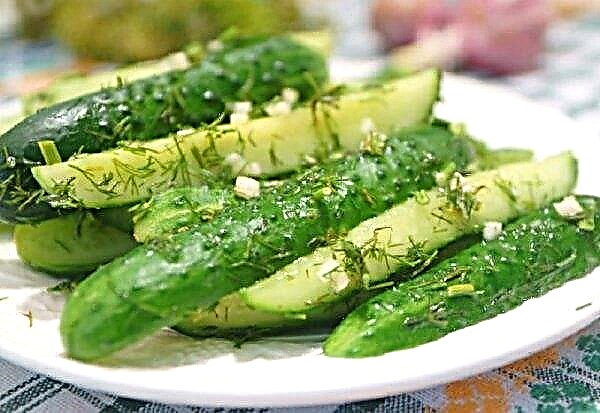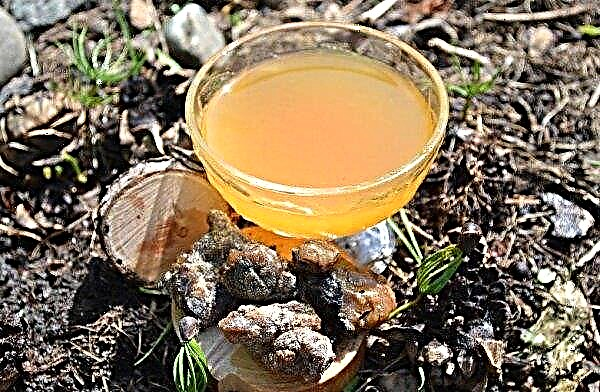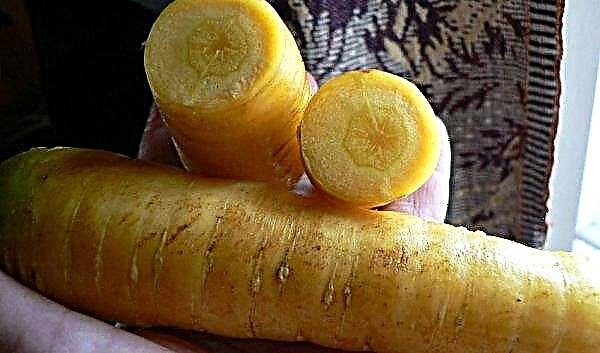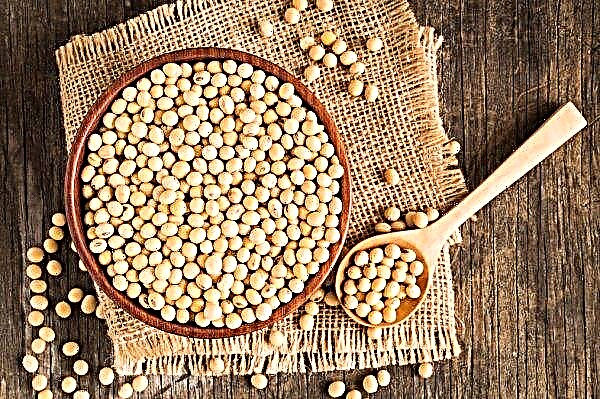These mushroom pickers probably know about all the features of the growth and collection of chanterelles in the forest, but little is known about the possibility of independent cultivation of these mushrooms at home. Subject to certain requirements for planting conditions and further care for chanterelles, they can be cultivated on your site, pre-selecting a place in the garden or preparing a site in a specially equipped greenhouse for this. What nuances should be taken into account when engaging in this type of activity and how difficult it can turn out to be - read in this article.
Chanterelle Growth Conditions
In the natural growth environment, chanterelles form a mutually beneficial symbiosis with the root system of various trees, receiving water from them and the micro and macro elements necessary for growth. Instead of the resulting mushrooms saturate the tree with useful substances from its own chemical composition, therefore, in order to achieve the most productive cultivation in artificially created conditions, you will have to take care of the availability of suitable overgrown tree rhizomes.
Alternatively, you can place the mycelium of the mushroom next to any coniferous tree on the site, but it is best if it is a pine or spruce, slightly shading the chanterelles (they do not like bright sun exposure). Neighborhood with fruit varieties will not bring the desired result, since they are not suitable partner trees for chanterelles.
If there is no “neighbor” suitable for mushrooms on the site, you can transfer here a small spruce dug out of the forest along with roots and mycelium. In this case, the chances of successful survival of planting material and future rich harvest are much greater. The ideal temperature for the sprouting of mushrooms is + 20 ... + 28 ° C, but in order for the mycelium to be preserved and yield a crop, it is important to maintain constant values not lower than -2 ° C.Important! If planting material was taken from the forest and before that was under the spruce, then at home it is better to place it next to this tree. So mycelium better take root and give a richer crop.

Of course, it is far from always possible to achieve such conditions in an open area, which is why some mushroom pickers prefer to grow chanterelles only in greenhouse rooms or to cover a recently transplanted mycelium for the winter.
Video: How to grow chanterelles in your area
Selection of planting material
When choosing chanterelle planting material suitable for yourself, first of all, you should focus on the look of the future symbiont tree growing on the site. It is from the same type of plant that it is worth taking the mycelium from the forest, and it must be healthy, strong with a green crown (from the trunk to the crown).
Among the most popular types of planting material of the mentioned mushrooms, the following are distinguished:
- hats of old specimens (including dried ones);
- spore infusion;
- cut off upper parts of the substrate, seized next to the partner forest tree;
- dug in the natural place of growth of the mycelium.

Obtaining spore infusion and chanterelle caps will not take much time, but preparation of the top layer of the substrate, with mycelium present in it, needs a longer treatment, with the soil removed in a dark room during the winter season at a temperature of at least + 8 ° C. So that the mycelium does not deteriorate, you will have to maintain the moisture of the substrate.
If you decide to breed chanterelles on the site with spores of this fungus, then there are several ways to “infect” the site:
- In the first version, first you need to soak the mushroom caps collected in the forest in a bucket of sweetened water (for at least 10–20 hours). After the specified time, the contents of the container are crushed by hands and the mixture is filtered through cheesecloth, then to pour water with spores under the selected tree and put on top of the pulp from the solid parts of the mushroom body (first remove the top soil layer on the chosen territory and disinfect the soil with tincture of oak bark).
- The second option involves the harvesting of mycelium (thin white threads in the ground), collected next to the symbiont tree growing in the natural environment. It is worth digging up the mycelium together with the part of the soil in which it is located, after which the planting material is moved into loosely tied bags with constant air supply and left for the winter in a cool place (for example, in the cellar). With the advent of spring, the prepared mycelium can be planted in the place designated for it.
In the simplest version of preparing “seeds”, you can immediately grind the whole mushrooms collected and fill them with sweet water for 7 hours, after which you will only have to fill the holes organized in the prepared soil with the obtained product (it is desirable to cover them with needles, fallen leaves or even grass collected in the forest) .Important! The presence of sugar in the liquid for soaking is a prerequisite in the preparation of planting material of chanterelles, since it is this substance that provides increased nutrient content of the solution and further productivity of the spores themselves. Sugar is added to the water at the rate of 100 g per 1 liter of liquid.

Preparing the landing site
Choosing a suitable place for planting chanterelles on the site, it is worth removing all the vegetable debris from the surface and removing the upper part of the soil itself (2-3 cm is enough). A few days before planting mushrooms, the substrate must be well moistened, after adding an infusion of oak bark to the rain liquid for watering, which can qualitatively disinfect the earth and create a favorable microclimate for growing mushrooms.
You can buy a nutritional supplement in finished form in pharmacies, or you can cook it yourself by pouring boiled water over a cut tree bark for several hours. On the day of planting, it does not hurt to additionally shed the soil with infusion of bark, the main thing is to dig a hole in advance with a diameter of 50-60 cm and a depth of 20-30 cm, in which the mycelium will multiply.

How to plant chanterelles
For planting chanterelles, you should choose a clear and fine day in late spring or early summer, when the weather has already settled in the street, but the humidity is still high.
Step-by-step implementation of planting measures can be represented in the following plan-scheme:
- To begin, abundantly pour the prepared area with infusion of oak bark (especially if you have not done this before).
- Then, after completely absorbing the liquid, put the seed from the prepared pulp at the bottom of the prepared pit and evenly distribute it along the bottom of the hole (this is how mushrooms are planted most often).
- Dig a hole in the ground and lay on top of forest grass, needles or leaves.

Moisten the planting, not allowing the soil to dry out and during the whole further time of growing mushrooms. The optimum moisture indicators at the initial stages of cultivation are at least 40–50%, but during the fruiting season they can be raised to 80–90%, which even a beginner can handle by watering.
Cultivation and care
Like most mushrooms, chanterelles love moist soil, so every 1 day in 7 days you have to water the mycelium from a watering can with a nozzle for sprinkling, reducing watering only during prolonged rains. 2-3 weeks after planting the chanterelles, carefully lift the upper covering layer (from forest grass and needles) and make sure that the mycelium is viable, which should stretch through the soil with violet threads with a greenish tint.
It is not worth digging the ground at the landing sites, otherwise there is every chance to disrupt the structure of the mycelium, and complex mineral compounds for garden vegetation can be used as fertilizer. In truth, feeding mushrooms is not much needed and in the presence of a symbiont plant they can be grown even on “lean” soils. 
In preparation for the winter season, the mycelium placed on the site must be covered with hay or dry branches, waiting for the first harvest next year. With the onset of spring steady heat, the excess upper shelter should be removed, thereby providing the mushrooms with space for further growth.
Industrial Chanterelle Growing
To provide chanterelles to all members of their family, one mushroom planted in the garden will suffice, which cannot be said about the industrial cultivation of such mushrooms. To obtain a stable profit, the harvest should be carried out most of the year, which means that it will not work without a greenhouse.
If you already have a similar room for growing vegetables, then it’s not necessary to build a new structure, it’s enough to re-plan the existing facility by installing suitable racks inside and organizing the heating system necessary for the chanterelles for the cold season. 1-wooden wall; 2- flank or ridge; 3- compacted clay floor; 4- a wooden rack with crossbeams; 5 - gable wooden roof; 6 - thermal protection; 7- outlet or stuffing box
1-wooden wall; 2- flank or ridge; 3- compacted clay floor; 4- a wooden rack with crossbeams; 5 - gable wooden roof; 6 - thermal protection; 7- outlet or stuffing box
In addition, to get the most positive result from growing mushrooms, you should pay attention to the following nuances:
- prepare a sufficient amount of compost consisting of manure, chopped straw, dry forest grass, sawdust and superphosphate fertilizer, to which it is useful to add a little gypsum and water;
- install an irrigation system capable of providing a sufficient level of humidity during the entire growing period (at least 80% during the active formation of fruiting bodies);
- create a partial darkening of the space using cloth or mesh for this, allowing the substrate to retain its moisture for a long time and protecting the mycelium from the negative effects of bright sunlight;
- equip the ventilation system and air conditioning system, preventing the accumulation of condensate and the constant flow of fresh air.

It is likely that to create a suitable microclimate, you will also need sealing of the floor and walls, with the installation of insulation material. Such an addition is more typical of old greenhouse buildings, the material of manufacture of which is not able to retain heat for a long time.
As for planting material in the industrial cultivation of chanterelles, it often becomes a purchased mycelium from a gardening store, although it is important to find a reliable supplier on this issue, the quality of which you will not have to doubt. With a small production, a mycelium personally brought from the forest is also suitable, which will take root even better in the closed ground of the greenhouse than in the yard. The method of planting chanterelles in greenhouse conditions is similar to planting near a house or cottage, and the difference is only in the prepared substrate and further conditions for cultivating the mushrooms.Did you know? Every year mushroom pickers around the world collect about 200 tons of chanterelles, but only 75 tons fall to Latvia. That is, this country can be considered a leader in the export of such mushrooms.

It doesn’t matter for what purpose you decide to grow chanterelles in a summer cottage (for personal use or want to build a business on a larger scale), the first rule of success is to take into account all the needs of mushrooms and create favorable conditions for the development of mycelium. Only having considered all your actions in advance, you can regularly collect plentiful harvests of tasty and healthy fruiting bodies.

